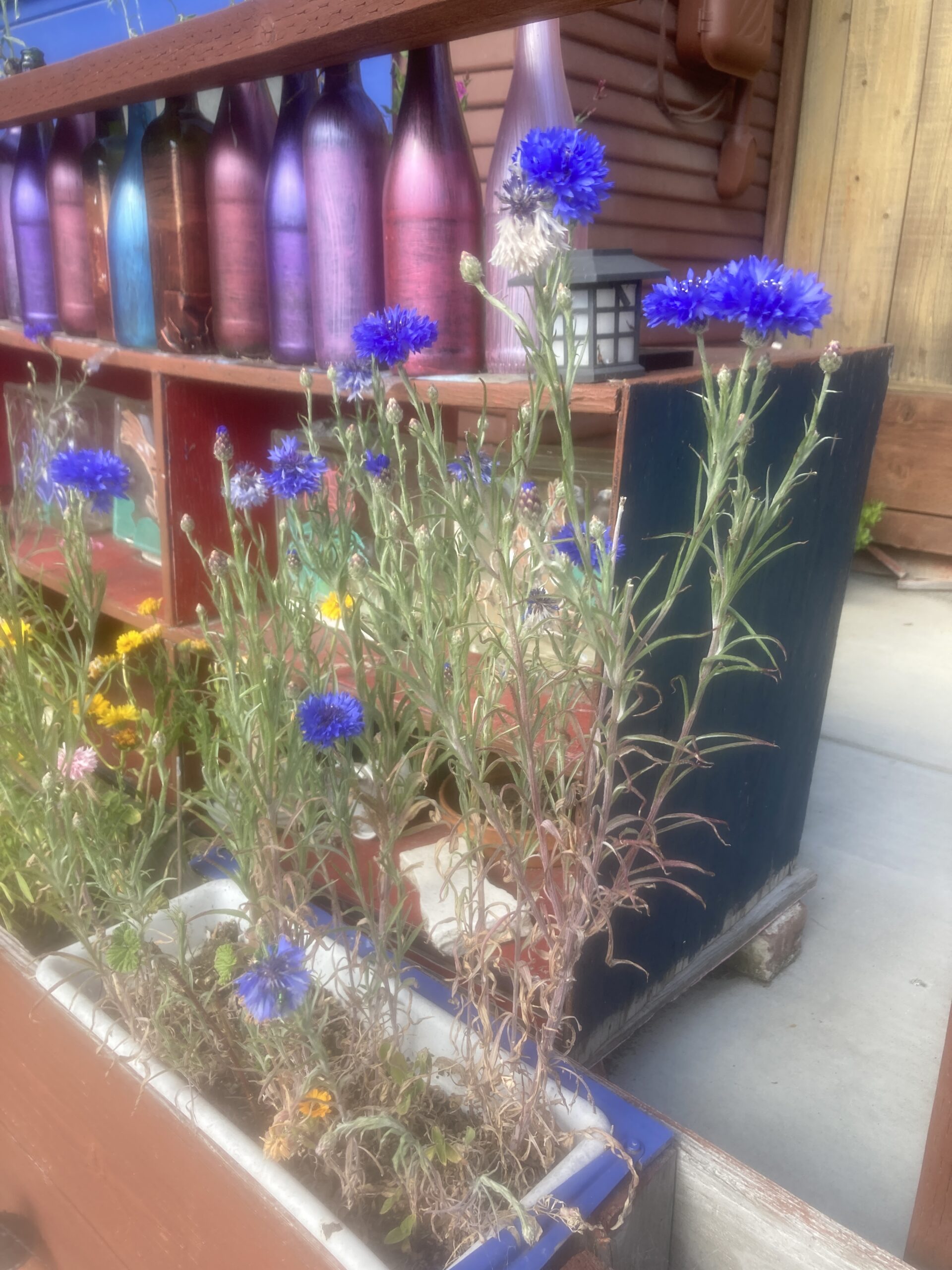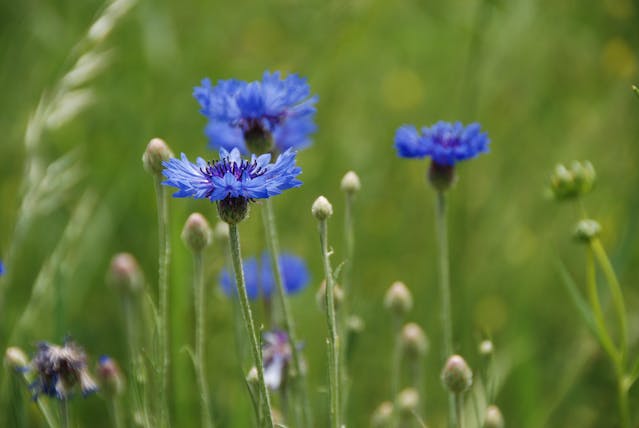Cornflowers Are Not Toxic to Dogs or Cats
Cornflowers aka Bachelor Buttons are safe for dogs and cats. These flowers are absolutely spectacular with the many bright colors they come in, especially the bright neon blue flowers that pop from the otherwise drab stalk. They look great next to other wildflowers like coreopsis / tickweed and poppies (even though they are not pet safe due to the opium in the seeds)
So you know, we check the flowers we feature on our site with the ASPCA and do extensive internet research for both the common and scientific name just to be super pet safe. If we cannot find direct reference, we check up to genus and so on until we can confirm whether a plant is toxic or non toxic to both cats and dogs. If we are not sure, or get contradictory information, we do not include it. Many of the plants featured we have grown successfully in our own pet safe garden in Northern California. You can see many of garden stars in photos from Lovie’s Pet Safe Garden.

Physical Attributes
Cornflowers have frilly, double blooms resembling miniature carnations, typically in shades of blue but also available in white, pink, red, and burgundy. The flowers are 1-2 inches wide on slender, multi-branching stems reaching 1-3 feet tall. The gray-green feathery foliage is also attractive.[1][3][4][5]
General Care Tips and Pointers
Grow cornflowers in full sun to partial shade and well-drained soil. Water about 1 inch per week. Deadhead spent blooms to prolong flowering. Cornflowers readily self-seed if not deadheaded. They are cold hardy, heat tolerant, and drought tolerant once established. Stake tall varieties to prevent flopping.[1][3][4][5]
Fun Facts/Trivia
Cornflowers are native to Europe and got their name from proliferating in cornfields. They are edible with a sweet, cucumber-like flavor. Nicknamed “bachelor’s buttons” from an old tradition of men wearing one as a sign of being ready for courtship. The blue cornflower is a symbol in German history and the national flower of Estonia.[1][2][5]
Citations:
[1] https://www.americanmeadows.com/content/wildflower-seeds/cornflower-seeds/all-about-cornflower
[2] https://www.almanac.com/plant/bachelors-buttons
[3] https://www.thespruce.com/grow-bachelors-buttons-1315694
[4] https://www.bhg.com/gardening/plant-dictionary/annual/bachelors-buttons/
[5] https://www.gardeningknowhow.com/ornamental/flowers/bachelor-buttons/growing-bachelor-buttons.htm

| Consideration | Details |
|---|---|
| Container Friendly | Yes, can be grown in containers, especially dwarf varieties.[1] |
| Indoor/Outdoor | Outdoor[1][2][3][4][5] |
| Sun/Shade | Full sun to partial shade. Seems to do better in partial shade in containers. [1][4][5] |
| Perennial/Annual | Annual[1][2][3][4][5] |
| Flowering | Frilly, double blooms in shades of blue, purple, pink, white, red from early summer to frost.[1][3][4][5] |
| Drought Tolerant | Yes, drought tolerant once established.[3][5] |
| Pollinator Magnet | Yes, attracts bees, butterflies and other pollinators.[2][3][5] |
| Beginner Friendly | Yes, easy to grow from seed.[1][3][4][5] |
| Good Ground Cover | No, grows 1-3 feet tall.[1][5] |
| Good Privacy Screen | No, not tall enough and often flops over in pots and containers. |
| Invasive/Spreader | Self-seeds readily but not considered invasive since does not spread.[1][3][5] |
| Dog & Cat Durable | not really hearty or fragile |
| Rodent Repellent | Unknown |
| Deer Resistant | Spiny centers may deter some deer. |
| Native | Native to Europe.[1][2][3][5] |
Citations:
[1] https://www.thespruce.com/grow-bachelors-buttons-1315694
[2] https://www.almanac.com/plant/bachelors-buttons
[3] https://www.americanmeadows.com/content/wildflower-seeds/cornflower-seeds/all-about-cornflower
[4] https://www.bhg.com/gardening/plant-dictionary/annual/bachelors-buttons/
[5] https://www.gardeningknowhow.com/ornamental/flowers/bachelor-buttons/growing-bachelor-buttons.htm





